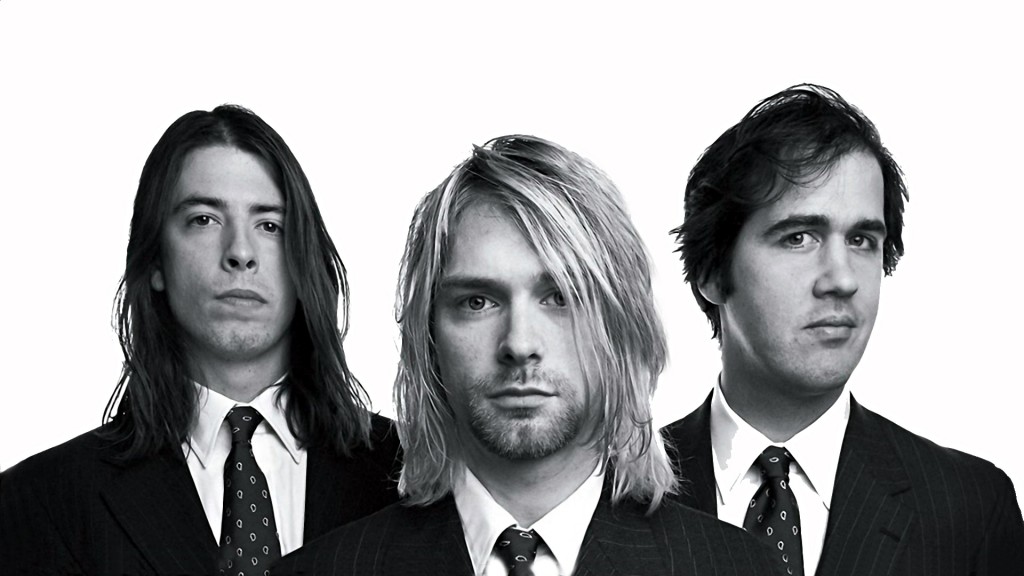
Left to right: drummer Dave Grohl, singer Kurt Cobain, and bassist Krist Novoselic.
Years before hipster cafes, the Super Bowl and the trailblazing rap of Macklemore, Seattle was an untamed haven for underground talent. The expansive grunge scene was born from teenage angst — a sound unique to the Northwest and relatively unknown to other parts of the country.
Then it was murdered.
Nirvana released their second studio album Nevermind on Sept. 24, 1991, and to some Seattle sound purists, it was the day the music died. It was an album that ignited the powder keg of the 80s new-wave punk rock scene in the Northwest.
An album of scratchy and screaming vocals; hard and fast drumming; and unforgettable riffs.
Nevermind dominated the airwaves and was the album that broke the Seattle music scene to the world. Kurt Cobain was lead vocalist and lead guitar; Dave Grohl, now Foo Fighters frontman, hammered the drums; and Krist Novoselic slapped the bass.
They were garage-band heroes turned international rockstars — frontmen in charge of a world they knew nothing about.
Lisa Nichols, a writer and editor from Portland, Oregon, says “you can’t overemphasize how much grunge changed everything that was happening at the time. Hair metal bands had to be due for their last gasp anyway but Nirvana and the rest of the Seattle bands firmly closed the coffin.”
Disenchanted, displaced youth were captured by Cobain’s raw lyrics and tempered soul, and American businesses wanted in on the subterranean subculture.
This was a scene that was born in the underworld. Was made to live and die in dive bars and dark basements. For purists like musician and journalist Mark Goldberg, “Nevermind killed grunge.”
Throughout the rest of the 1990s, particularly after Cobain’s death in 1994, and into the 2000s, grunge lived on as a fad; and like all fads, it was due for a funeral.
“Grunge became such a mainstream fad that the scene around it had no choice but give up,” Goldberg said.
“Labels started signing bands left right and centre who were barely ‘grunge.’ And a lot of bands just adopted grunge to cash in,” Goldberg said. “Many other bands got major label deals and the pressure to sell by the label ended up causing them to make repetitive, dull records.”
In an interview with CNN, Chris Cornell, lead vocalist and songwriter for Soundgarden and Audioslave, says the Seattle music scene was traditionally “anti-commercial” and “anti-every-institution-that-supported-commercial-music.” And the rise of corporate investments and major labels, in essence, tainted what once was.
On Grohl’s 2014 music documentary Sonic Highways, Cornell added that after Nirvana’s success “the scene was no longer there.”
“Everyone that I knew was out making records and touring,” Cornell said. His quote followed quickly by Seattle music producer, Jack Endino, saying “Pre-money, pre-drugs, pre-business … there was a lot of fun that happened.”
By the turn of the century, Goldberg says, grunge lost it’s soul, is deceased and “irrelevant in the 21st century.”
“Seattle still has a scene but it’s as diverse as any other normal city’s now,” Goldberg added. But for grunge, Goldberg says once the public wanted a piece, they got it and what was special about that unique sound is gone.
For grunge historians and rockers, though, there’s always optimists like Grohl.
Grohl believes the spirit of grunge is still going strong. In 2013, when asked if grunge ‘would make a comeback’ he told a redditor: “If you mean loud ass guitars, loud ass drums, and screaming ass vocals? That never went away ding dong.”
__________________________
Document Questions:
1) Youtube Clip: Nirvana 100 Greatest albums of Rock and Roll. I found this by searching through Youtube clips about Nirvana’s Nevermind album and trying to place sound within the article so the listener can get an idea of how the music sounded and add to the impact of the article. I think it’s quite helpful in providing the reader with the chance to listen in the story.
2) Youtube Clip: Chris Cornell on Seattle’s grunge era. I knew I wanted to get the voice of Cornell in the story, and I did so through interviews he’s done with Grohl and CNN. Though, I thought it would be neat for the reader to check in and see at least one of those interviews. I believe it’s helpful as a visual element to accompany the source text.
